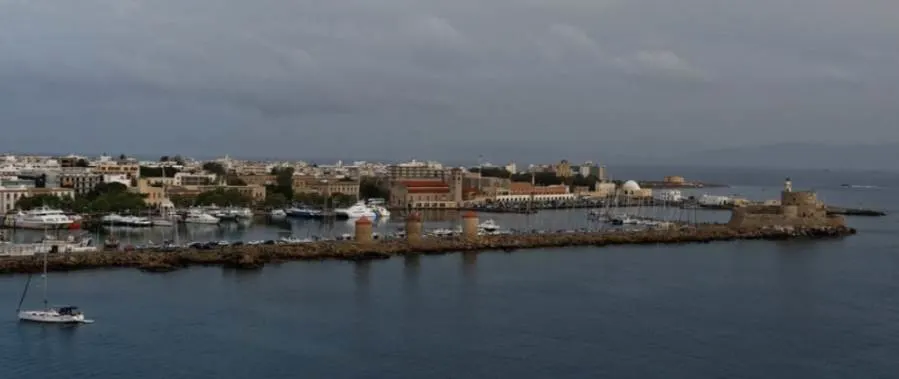The island of Rhodes was once home to the tallest statue in the world. The statue is considered to be one of the 7 wonders of the ancient world. It was a statue depicting nobody but the Greek sun-god Helios himself.
The statue was located in the city of Rhodes on the island of the same name. It’s the largest of the Dodecanese islands of Greece just south of modern-day Turkey.
In this post, we present you with the ultimate list of facts about the Colossus of Rhodes.
1. Why was the Colossus of Rhodes built?
The island of Rhodes had always heavily relied on trade as a source of income. It had a massive fleet and became rich as a result of its export activities.
To maximize their profit, they remained neutral in the light of conflicts and held close relationships with neighboring empires.
They especially had good relations with Ptolemy I, the right hand of Alexander the Great, who became the ruler of Egypt.
This wasn’t to the liking of Demetrius Poliorcetes, a Macedonian nobleman who would eventually become King of Macedon.
in 304 B.C. he took his newly invented battering ram along with 150 ships to the island of Rhodes and besieged it to encourage them to change their minds regarding their neutrality and close relations with the ruler of Egypt.
It didn’t help. After one year he needed to abandon his siege and to celebrate this famous victory, the Rhodians erected the Colossus of Rhodes, the tallest statue in the world at that time.

2. Who built the Colossus of Rhodes?

Around 292 B.C. the Rhodians felt they needed to celebrate their victory in the 304 B.C. siege of Rhodes with a huge statue of the sun-god Helios.
Chares of Lindos was a Rhodian-born sculptor and the student of one of the most famous sculptors in all of Greece, Lysippos.
He was awarded the project and construction took about 12 years. In 280 B.C. the Colossus of Rhodes was finally completed.
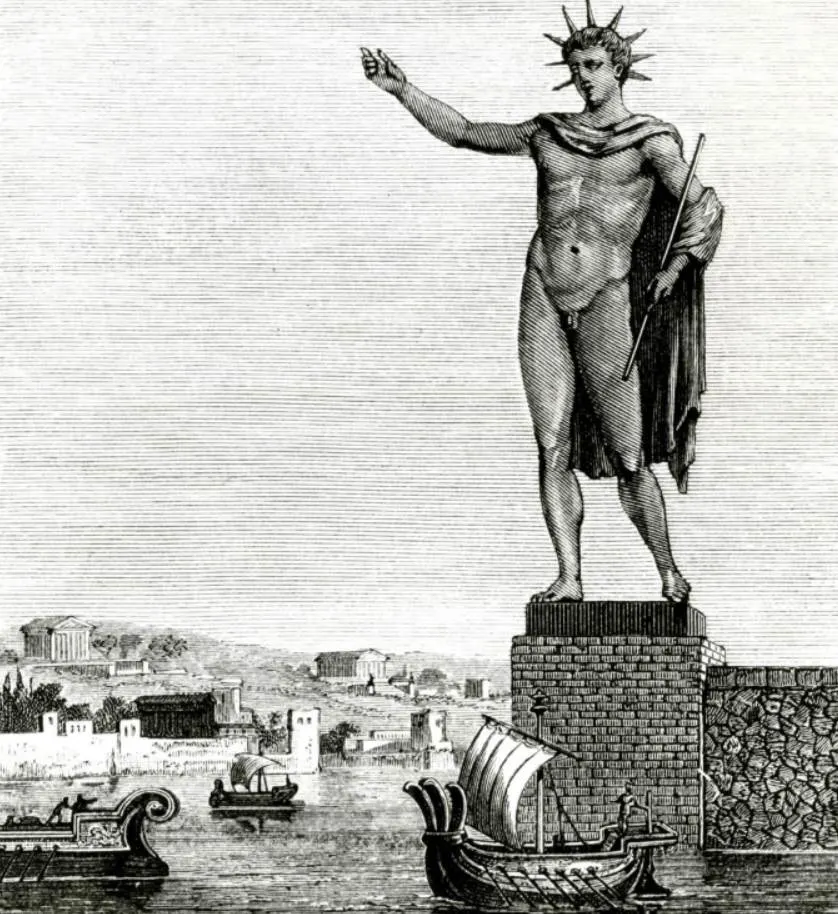
3. How big was the Colossus of Rhodes?
It’s impossible to know with certainty how tall the Colossus of Rhodes really was, but contemporary reports help us to get a clear picture.
The statue itself stood on an immense white marble pedestal. This pedestal alone was already 15 meters (49 ft) high and 18 meters (59 ft) in diameter.
The statue itself is estimated to have been about 33 meters (108 ft) tall.
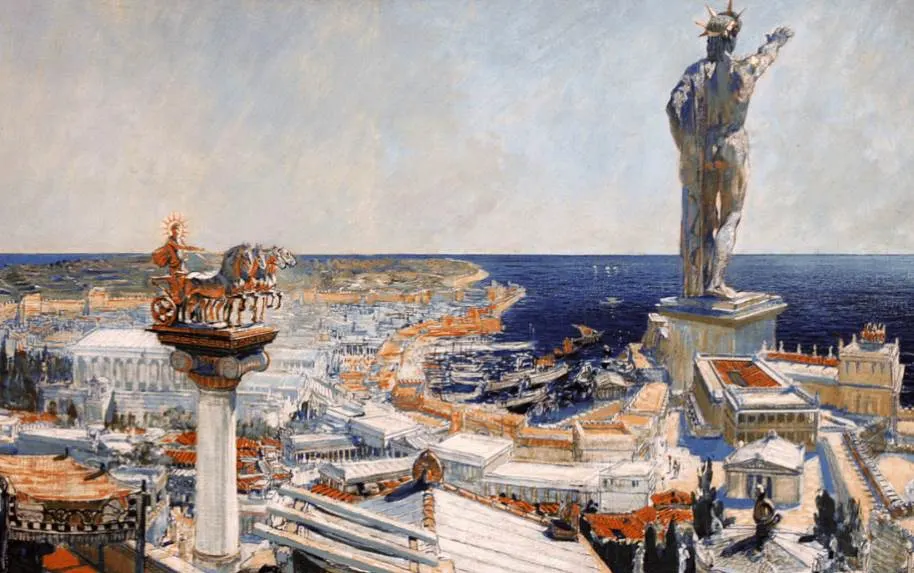
4. Where was the Colossus of Rhodes located?
For a long time, it was believed that the location of the Colossus of Rhodes was near the entrance of the harbor of Rhodes. This suggestion is made strong by a circle of sandstone blocks located on the floor of the Fortress of St Nicholas near the harbor which don’t seem to have any other reason to be there.
While less convincing in many ways, another theory places the statue near the Acropolis of Rhodes as a large stone foundation found there could have served as a base for the pedestal.
At this moment, the exact location of the Colossus of Rhodes remains open for debate.
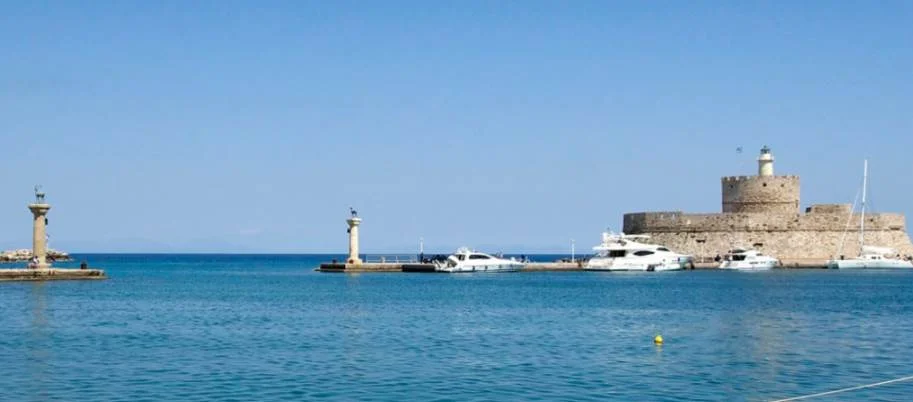
5. What was the Colossus of Rhodes’ Position?
In medieval times, the position of the statue was thought to be with legs wide open, allowing ships to pass under it.
References to this position are made by both an Italian visitor in 1395 and Shakespeare’s famous play “The tragedy of Julius Caesar.”
It’s pretty much certain though that the statue was standing with legs close together on one side of the harbor. Three elements prove this theory:
- If the Colossus of Rhodes was standing with legs apart, each on one end of the harbor, the harbor would have been closed for the duration of its construction. This wasn’t the case.
- It would also have blocked the harbor after its destruction. No reference of this has been made.
- Finally, if the statue was built with legs spread, it couldn’t have carried its own weight and would simply have collapsed.
This simply means that every illustration of the Colossus of Rhodes with legs spread is an incorrect one.

6. What happened to the Colossus of Rhodes?
Rhodes was hit by a massive earthquake in 226 B.C. which damage large portions of the city of Rhodes.
According to Greek geographer and historian Strabo, the statue broke off at the knees during the earthquake and fell onto the land. This means the Colossus of Rhodes only stood for 54 years.
It stayed in the same position for multiple centuries (over 800 years) until the year 653 A.D.
So what happened to the Colossus of Rhodes?
Arabic forces captured Rhodes and melted down the remains of the statue, only to be sold to a Jew Merchant from Edessa. He loaded the bronze onto 900 camels and off he went.
This story is known as the “Chronicle of Theophanes the Confessor” and provides us with the only explanation as to what happened to the statue.
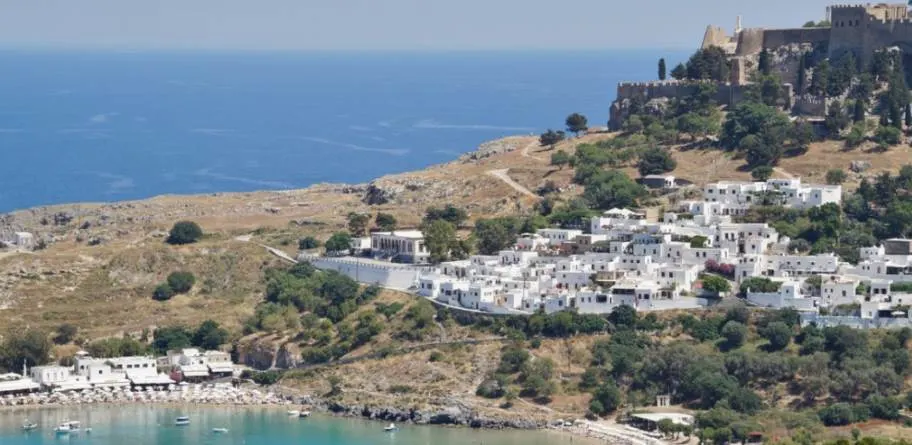
More facts about the Colossus of Rhodes
7. The Colossus of Rhodes was the tallest statue ever built in the ancient world. The tallest statue in the modern world is the “Statue of Unity” depicting the Indian independence activist Sardar Vallabhbhai Patel. It is located in Gujarat in India.
8. Apart from the fact that the Colossus of Rhodes was just about as tall as the Statue of Liberty in New York (34 meters), they both represent freedom. The Statue in New York contains a plaque on its pedestal entitled “The New Colossus” and part of it reads:
“Not like the brazen giant of Greek fame, With conquering limbs astride from land to land; Here at our sea-washed, sunset gates shall stand A mighty woman with a torch, whose flame.”

9. The money used for the construction of the Colossus of Rhodes came from the weapons left behind by the army of Demetrius Poliorcetes after their unsuccessful siege of the city of Rhodes. the Rhodians sold these and used the money to build their famous statue.
10. Why didn’t the Rhodians build the statue again after it was partially destroyed, one might wonder, right? Better yet, Ptolemy III, the King of Egypt at the time even offered to fully fund the rebuilding of the statue. The reason is an oracle saying Helios was angered by its construction and actually caused the earthquake that left the majority of the city of Rhodes, and the statue itself, in ruins in 226 B.C.
11. Nothing of the Colossus was visible during its 12-year construction. The reason was that the people building the statue would put dirt alongside it to form a ramp to build the higher parts. When the statue was completed, the dirt was removed and the statue was visible in all its glory.
12. Even though this hasn’t been realized (yet), plans have been made to create a new Colossus in the exact location the ancient one presumably stood. The 250 Million Euro price tag will probably assure it will never be realized considering the economic struggle of Greece in current times. This is pretty much the contrary of the rich times the ancient Colossus of Rhodes was built.
13. Next to the Colosseum in Rome, there used to be a massive statue of the infamous emperor Nero that was modeled after the Colossus of Rhodes. It wasn’t destroyed after he had killed himself but rather repurposed. What was officially known as the “Flavian Amphitheater” is better known by its nickname the “Colosseum,” which it got from the statue that stood next to it.
14. The Colossus of Rhodes was actually made using an iron framework. They then attached brass plates to it to create its outward appearance.
15. It is believed that the creator of the statue didn’t live to see his completed work as he committed suicide according to some legends. One of the more popular tales is that he bankrupts himself after miscalculating his reward for creating the statue. A simplistic version of the legend claims somebody pointed out some flaws in the design and he killed himself out of shame.
16. One of the most interesting facts about the Colossus of Rhodes is that even though it only stood tall for 54 years, it’s still one of the 7 wonders of the ancient world.
